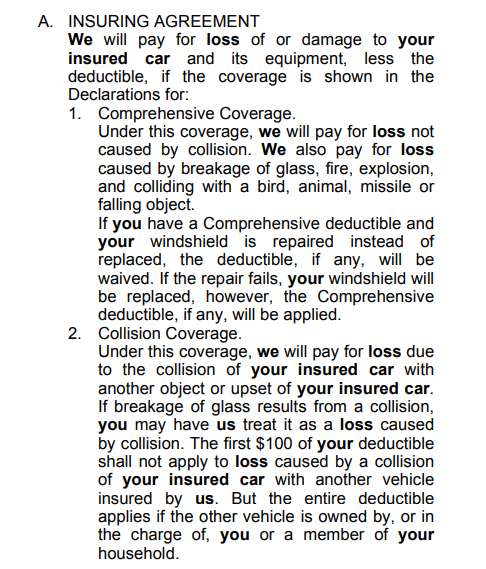The Greatest Guide To Pacific Prime
The Greatest Guide To Pacific Prime
Blog Article
The Of Pacific Prime
Table of ContentsAll About Pacific PrimeNot known Facts About Pacific PrimeEverything about Pacific PrimePacific Prime Fundamentals ExplainedOur Pacific Prime PDFs
:max_bytes(150000):strip_icc()/basics-to-help-you-understand-how-insurance-works-4783595_final-9cf74d5b66d14f88a21ab29ddb290e2d.png)
This is because the data were collected for a duration of solid economic efficiency. Of the estimated 42 million individuals who were uninsured, just about about 420,000 (concerning 1 percent) were under 65 years of age, the age at which most Americans come to be eligible for Medicare; 32 million were adults in between ages 18 and 65, about 19 percent of all adults in this age; and 10 million were youngsters under 18 years of age, concerning 13.9 percent of all children (Mills, 2000).
These quotes of the variety of persons without insurance are created from the annual March Supplement to the Present Populace Survey (CPS), performed by the Census Bureau. Unless otherwise noted, national estimates of individuals without medical insurance and proportions of the population with various kinds of insurance coverage are based on the CPS, the most commonly used source of quotes of insurance policy protection and uninsurance rates.
Unknown Facts About Pacific Prime

Still, the CPS is particularly beneficial since it creates annual quotes fairly quickly, reporting the previous year's insurance coverage estimates each September, and because it is the basis for a consistent set of quotes for even more than twenty years, enabling analysis of patterns in protection gradually. For these reasons, in addition to the comprehensive use of the CPS in other researches of insurance policy protection that exist in this record, we rely upon CPS quotes, with limitations kept in mind.

The estimate of the variety of uninsured individuals expands when a population's insurance coverage condition is tracked for several years. Over a three-year duration beginning early in 1993, 72 million individuals, 29 percent of the U.S. https://dzone.com/users/5122954/pacificpr1me.html. populace, lacked coverage for a minimum of one month. Within a single year (1994 ), 53 million individuals experienced at least a month without coverage (Bennefield, 1998a)
Six out of every ten without insurance grownups are themselves utilized. Although functioning does improve the likelihood that and one's member of the family will have insurance coverage, it is not a guarantee. Also participants of households with two permanent wage earners have almost a one-in-ten chance of being without insurance (9.1 percent without insurance rate) (Hoffman and Pohl, 2000).
The 9-Minute Rule for Pacific Prime
New immigrants account for a significant percentage of individuals without health and wellness insurance policy. One analysis has actually attributed a substantial portion of the current growth in the dimension of the U.S. without insurance populace to immigrants who arrived in the country in between 1994 and 1998 (Camarota and Edwards, 2000). Current immigrants (those that concerned the USA within the previous four years) do have a high price of being without insurance (46 percent), however they and their kids make up simply 6 percent of those without insurance policy nationally (Holahan et al., 2001).
The partnership between medical insurance and access to care is well developed, as documented later on in this phase. The partnership between health insurance coverage and wellness results is neither straight nor easy, a considerable scientific and wellness solutions research study literature links wellness insurance policy protection to enhanced access home to care, better high quality, and enhanced personal and population wellness standing.
Degrees of analysis for examining the impacts of uninsurance. It focuses specifically on those without any kind of health insurance policy for any type of size of time.
The Single Strategy To Use For Pacific Prime
The problems faced by the underinsured are in some areas comparable to those dealt with by the uninsured, although they are typically less extreme. Health and wellness insurance coverage, nevertheless, is neither needed nor sufficient to gain accessibility to medical solutions. The independent and straight effect of health insurance protection on accessibility to wellness services is well developed.
Others will certainly obtain the wellness treatment they need even without wellness insurance coverage, by paying for it expense or seeking it from carriers that provide treatment complimentary or at highly subsidized prices. For still others, health and wellness insurance alone does not make certain receipt of treatment as a result of other nonfinancial obstacles, such as a lack of healthcare carriers in their neighborhood, limited accessibility to transportation, illiteracy, or etymological and cultural differences.
All About Pacific Prime
Formal study concerning without insurance populaces in the United States dates to the late 1920s and early 1930s when the Board on the Price of Healthcare produced a collection of records regarding funding doctor workplace gos to and hospital stays. This problem came to be salient as the numbers of medically indigent climbed during the Great Anxiety.
Report this page